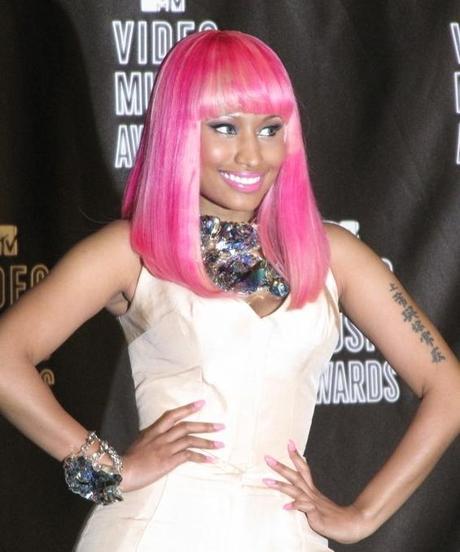
Nicki Minaj: the latest 'bootylicious' star
In the Vogue article “We’re Officially in the Era of the Big Booty,” writer Patricia Garcia argues that,
“In music videos, in Instagram photos, and on today’s most popular celebrities, the measure of sex appeal is inextricably linked to the prominence of a woman’s behind. For years it was exactly the opposite; a large butt was not something one aspired to, rather something one tried to tame in countless exercise classes. Even in fashion, that daring creative space where nothing is ever off limits, the booty has traditionally been shunned.”
Ms. Garcia’s claims do not seem to be rooted in proper historical research. The notion that “for years…a large butt was not something one aspired to” is false, and can be disproved by the fascination of the cultural icon scholars call “La Venus Hottentote.”
Like many voluptuous women in the public eye today, “La Venus Hottentote” spent the majority of her life putting her body on display. Her behind was well-admired by Scottish Doctor Alexander Dunlop, leading to her own display on Piccadilly Street in London. “For a few extra dollars, you could poke her with your fingers or a stick,” notes Clifton Crais of Emory University. Colonial scholars and researchers were so fascinated by Saarjte Bartmaan’s thick physique, that after her death in 1815, she was, in fact, dissected.
Though many historians and fashion experts would agree that Ms. Bartmaan’s body was, ”a symbol of the alienation and degradations of colonization, lost children, exile, the expropriation of female labor and the sexual and economic exploitation of black women by men, white and black,” aspects of the black female physique continued to inspire trends long after Ms. Baartman’s death.
The fascination with Saarjte Bartmaan’s behind heavily contributed to the development of a Victorian fashion trend known as a bustle, or “frame worn under a dress or skirt by women in the late 19th century to make the skirt stick out.” But this trend was not just influenced by Bartmaan’s body, but really came from Western European women wanting their backsides to mirror that of typical “African ladies” they had seen (probably on display).
This desire for Western European women to claim thick behinds as their own sounds all too similar to Vogue’s announcement that this is “the Era of the Big Booty.” Even worse, claiming that “the big booty” hasn’t “been in” completely ignores a large sect of America- black America.
As an African-American woman, I can say with great confidence that the notion of “big booty” is a point of pride in black America. Regardless of which chic designer or journalist makes a new line, black Americans hold “big booty” on a pedestal. From “I like big butts” to “All I want for my birthday is a Big Booty,” lyrics in hip-hop and rap praise “the big booty” like it’s a demi-god.
And just like in Ms. Baartman’s lifetime, many non-black people are still fascinated with how large butts on black bodies move, shake, and feel. With developments in medicine, people can get “butt implants” to increase tissue on their back sides. Heidi Montag even had “a back curving procedure” just to carve out her back side a little more,” although the procedure had never been done before.
Even though I was taught to embrace my curves, and to flaunt “all that God gave me,” I would never encourage a fellow human being to change themselves to feel included in what Vogue calls “the Era of the Big Booty.” Many black Americans value “being thick” as a way of maintaining appreciation for (black) culture in a world that places so much value on Eurocentric standards of beauty.
Patricia Garcia’s words only reaffirmed colonial stereotypes about what it means to be a black woman, and how non-black (and black) men should be swayed by what the news has to say about perceptions of black, female bodies. “The Big Booty” was never an era, or a trend, because being thick (and owning it) is just an every day part of hundreds of (black and non-black) women’s lives.
Originally posted via Neon Tommy.

